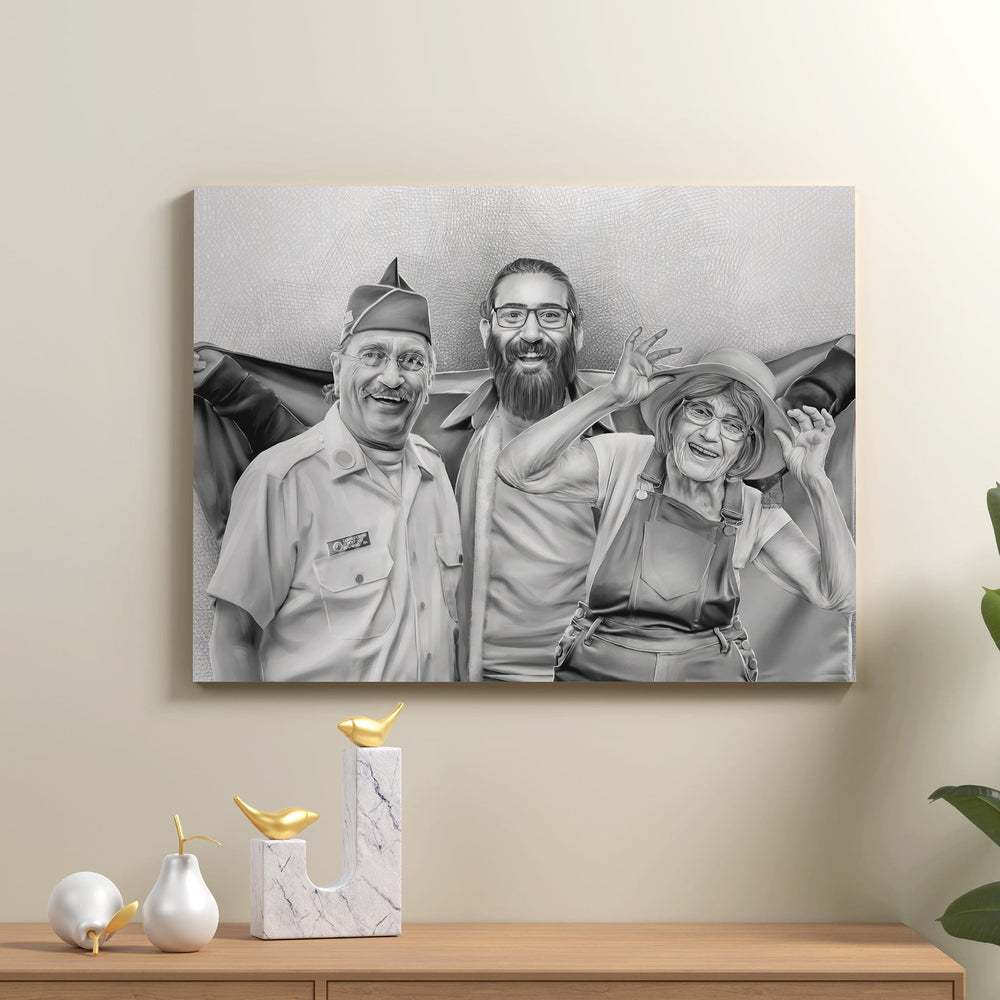Exploring The Principle of Movement in Art


Photo by Fiona Art from Pexels.
Using the elements of art has always been a vital way for people to express themselves. Among the many things that make art come to life, the movement principle of art stands out as a basic concept. It gives representational art a sense of reality and sincerity, making the subject matter feel more natural and like people. If artists know the definition of movement in art, they can evoke emotions and create a visceral response in viewers.
Motion in artworks lets artists go beyond the limits of time and space, catching brief moments or giving the illusion of movement. Artists can show many different ideas and themes, like the passage of time, the energy of a busy city, or the actual movement of people in a graduation pencil drawing. The movement principle of design can effectively convey narratives and stories. Like in a film, the depiction of motion in artwork can communicate a sequence of events, actions, or transformations. This sense of movement aspect engages viewers by inviting them to interpret and follow the visual representation, sparking their imagination and curiosity.
Types of Movement in Art

Order Your Custom Family Pencil Drawing Here
Artists can tap into their imagination and try new ideas when they use different kinds of movement in their work. Also, different types of movement can make people feel other visual rhythms and communicate many different art styles. Using different movement principles of art, artists can change their styles to fit various topics, themes, and artistic goals.
Visual Movement

Photo by Kaique Rocha from Pexels
Visual movement in art is when a still picture gives the impression or illusion of motion. A visual element can give the impression of movement or lead the viewer's eyes from one part of the piece to another. For example, the lines and angles of the people in a family pencil drawing create a sense of movement and energy.
Physical Movement

Photo by Cottonbro Studio from Pexels
When we talk about artworks having physical motion, we're referring to including real, physical, artistic elements that may move or change position within a single art form. Sometimes, physical movements can be seen in sculptures, paintings, or optical art.
Rhythmic Movement

Photo by Mick Haupt from Unsplash
Rhythmic movement in artworks is visualizing a pattern through repetitions or sequences. Some examples of repetition of elements are using curved or diagonal lines, alternating color or value, or arranging geometric shapes in a particular order.
Dynamic Movement

Photo by Mathias Reding from Pexels
Artworks that depict a solid or active sense of movement within the entire composition are said to have dynamic movement. Artists can use big, flowing brushstrokes and interesting angular shapes to show a sense of motion. It offers rapid movement and activity or makes a strong arrangement of elements that engages the viewer's attention.
Achieving Movements in Art

Get an acrylic painting of your most treasured photo here.
Use of Dynamic Lines
Dynamic lines give an implied movement in paintings. The illusion of movement created by diagonal lines can imply a running figure, or curvilinear lines can convey the movement of a dancer. Angled or crossing lines can create a dynamic feeling of motion, while lines that come together can suggest movement toward or away from that point.
Combination of Elements
Combining art elements contributes to the actual motion within a design principle. For example, elements of design that overlap, diagonally oriented art objects, or asymmetrical balance can negatively create an impression of action. Aside from that, manipulating the scale and proportion of key elements can contribute to the regular rhythm of artistic motion.
Color Contrasts
Color contrast is a tool artists use to provide the impression of motion in their work. Using dark colors or strikingly bright hues may infuse a design with vitality and excitement. Artists can utilize a progression of colors, such as a gradient or a sequence of shades, to create a sense of rhythm or transformation within the artwork.
Examples of Movement in Art
The rhythm in art examples is diverse. From optical illusions and line art to famous paintings, the pattern of shapes, color elements, and other art fundamentals may all present a sense of action in an artwork. Here are some of the most famous paintings that have a series of motions.
Descending by Bridget Riley

Photo Sourced from MutualArt
Riley's skillful use of optical illusions forces our eyes to work harder, leading us to read the motion lines. The lines have a random rhythm and intensity that draws the eye inside, creating an interactive and immersive experience for the observer.
Starry Night by Vincent Van Gogh

Photo Sourced from The Van Gogh Gallery
The dramatic, turbulent brushstrokes of the swirling sky create a movement in the painting as if the entire sky is in motion. Van Gogh's use of color is another factor that provides motion in art. The visual tension created by the complementary blues and yellows heightens the feeling of movement.
Scream by Edvard Munch

Photo Sourced from Edvard Munch.org
The figure's deformed stance and expression are key aspects that add to the impression of movement. The long, curving lines of the figure's torso and the sweeping arcs of the backdrop convey a turbulent and agitated motion sensation. Munch's vivid colors further heighten the impression of motion and anguish.
Final Thoughts
The incorporation of motion in art enhances its aesthetic appeal and invites viewers to experience a visual journey that transcends the static confines of the canvas. The concept of movement can enrich the viewer's experience, allowing them to enjoy and understand an artwork more.
Know More About The Movement Principle of Art With Memorialize Art
The exquisite artworks from Memorialize Art are carefully crafted pieces that demonstrate the power of movement in evoking emotions, engaging viewers, and immortalizing moments in time. The movement principle of these artworks helps an artwork's audience deepen the connection with art and gain a greater appreciation for the complex ways in which artists bring their creations to life.










